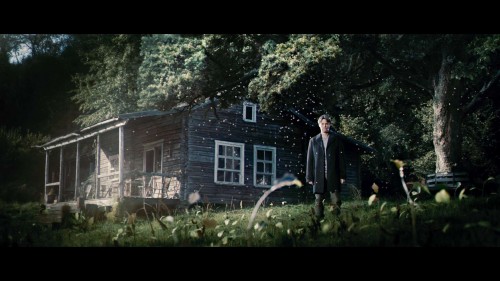Antichrist
Christmas Season, Here Comes Your Worst Nightmare

Starring: Willem Dafoe, Charlotte Gainsbourg
By Robert Patrick
Antichrist’s moniker, one of ill faith and unwavering despondency, does little to hide the fact that the movie is one gnarly, wretched, semi-unwatchable beast. Lars Von Trier’s usual minimalism – chalk lines in Dogville and Manderlay; weepy prayer sessions in Breaking the Waves – is swept under the carpet in Antichrist’s visceral, stomach churning climaxes of mutilated genitalia and talking foxes. Von Trier’s opus was written during an extended period of sadness and unabridged depression. A married couple, played here by Willem Dafoe and Charlotte Gainsbourg, share the same sentiments of loss and futility in Von Trier’s Antichrist, especially when their young child plummets, teddy bear in tow, out of the couple’s second story home to an untimely death. This specific tragedy sets in motion a string of precarious situations that completely bend the sanity of both Dafoe and Gainsbourg’s characters, both of whom are known simply as “he” and “she” respectively.
Gainsbourg falls into an abyss of hysteria after her child’s death; when she isn’t giving in to unhinged paranoia, she is bicycle kicking her husband in the chest. Most of the movie is difficult to watch, but the sequences where Gainsbourg is making animalistic sounds out of sheer despair is heartbreaking. Dafoe, whose character’s attempted psychological assistance further warps his wife’s sanity, forces her to face her fears, no matter what the consequences, and ends up paying the price. Dafoe adlibs Freud throughout the film, though he obviously doesn’t know what he is doing. He takes her to a remote cabin in the woods that looks reminiscent of a Lovecraftian shack, where she dreamed of marching, ever so slowly, through thickets of trees and milky white fog. Dafoe surmises that she needs to go to this destination to snap out of her traumatic episodes that include walloping her head against toilet bowls and teetering back and forth in agony. This, as you could probably imagine, doesn’t really help Gainsbourg’s psychosis as much as it damages it. The gasping for air, incessant crying, and spit bubbles stop, but Gainsbourg’s mood swings increase to the point of extreme madness.
Von Trier paces the movie slowly, anchoring the mood with far off noises and the faint clacking of what sounds like machinery. Some shots focus on the density of a jar of flowers, coming up so close that the particles in the water begin to look like schools of fish. Von Trier’s style of filming is dreamlike, sensationalized, and hallucinatory. One of the more memorable scenes in the film, where there is a shot of foliage being penetrated by the noise of what sounds like an oncoming locomotive, is unnerving and fascinating to watch. When watching Antichrist, the visual and auditory prose is more important than the actual story itself. Sometimes it’s easy to imagine Von Trier being a sous-chef for the ever manic and mercurial David Lynch. Their styles as directors range from soft and poetic to shrill and macabre.
If you’re yearning for a linear plot line, packed to the rim with typical structures, I suggest you look elsewhere; Von Trier offers no sympathy for your confusion, no friendship for your efforts. If emotions had brass knuckles, Antichrist would be wearing them. This movie takes commitment from the first frame to the last. And though I cannot give this an electric score because of the abominable harm it does to its viewers during the finale, this is the best three star film I have ever rated – which doesn’t sound like a glowing endorsement, but it is.
Antichrist isn’t an entertaining movie, but it is the most interesting that I’ve seen all year. Some of the images in this film, save for two particular disturbing ones at the tail end of the movie, deserve to be framed for their beauty. Von Trier has crafted a kaleidoscope of dirty, unimaginable chaos that floats ominously over your subconscious long after the film has ended. Dafoe and Gainsbourg were brave to take on such an emotional trying endeavor, especially when considering just how physically demanding the roles were. There is no real way to recommend Antichrist for general audiences, as it does feel like you are getting lashed with a razor strap at certain points in the film. But for those who want a horror movie with teeth, Von Trier has cooked up an artistically driven film with enough guts to scare even the most avid scary movie junkie – and if you’re not satisfied with this particular offering, wait until the director’s next ditty, aptly titled “Melancholia”, which, from the title alone, suggests more psychological pandering.
3/5
